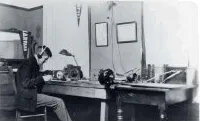Table of Contents
In the 1950s and 1960s, the land around Stanford University became home to companies and people who built the foundation of the innovative world we now know of as Silicon Valley. Since then, trillions of dollars in value have been created by iconic entrepreneurs like Steve Jobs, Bill Gates, Elon Musk, Mark Zuckerberg, and hundreds more.
Along with making people rich, Silicon Valley’s startups have led to growing national influence, economic advancement, and regional autonomy. The Valley’s rise posits the question: How could it be replicated in other parts of the world?
Many have tried and failed to capture the magic of Silicon Valley. The first attempt was in the mid-1960s with New Jersey recruiting Frederick Terman, the Stanford Electrical Engineering professor and provost who started the Stanford Research Park. The state tasked him with building an environment in which companies and universities could collaborate, leading to the innovative culture of Silicon Valley centered around Stanford that Terman had once crafted. This attempt failed, as companies would not share research and talent.
Since then, multiple cities across the globe have tried to recreate the atmosphere Silicon Valley has perfected with little to no success. No matter the capital provided, world-class universities present, or governmental support, achieving outcomes on the same stage of Silicon Valley was rare and not sustainable.
Given the numerous failures, authors across numerous journals like the Harvard Business Review, MIT Technology Review, and Scientific American have postulated that Silicon Valley’s success is not replicable. In other words, governments cannot manufacture their own Silicon Valley.
However, organic and consequential startup environments can grow outside of Silicon Valley. While governments and politicians may advertise tax incentives, innovation grants, or policy reforms that claim will build a resilient technology hub, this approach misses a crucial point. While these measures can help scale a startup ecosystem from 1 to 1000 (or tank an ecosystem from 1 to 0 if done poorly), it cannot manufacture a startup spark, a group of builders that create something from nothing.
These communities need to be built from the ground up—organically. Here lies the detail that most decision makers miss. The reason why the area around Stanford became the most valuable land on earth is not because of government funding to fuel semiconductor growth, although it did play a role.
The real reason why the area around Stanford became the ground for innovation is because Terman had a passion—a passion for radios. That’s it. This passion led a young Terman to develop the first radio electronics class at Stanford and had a profound impact on two of his students Bill Hewlett and David Packard, who eventually founded the giant Hewlett-Packard.
Packard reminisced on the experience: “Here, for the first time, I saw young entrepreneurs working on new devices in firms which they themselves had established.”
Here lies the trillion-dollar secret that is so simple yet so important: Building the next Silicon Valley requires the curiosity and talent to already be local, at least at first. Terman did not choose Stanford because there were sleek new offices and government initiatives to build. He chose Stanford because it was home.
It was Terman’s ambition and determination that transformed Stanford into the innovation epicenter it is today.
From there, government policy like California’s non-compete law, world-class universities like Stanford, and grants and contracts from the government helped the ecosystem scale into a global epicenter of progress. But policy is not the reason why Silicon Valley became the innovative hub of the world in the first place.
If policymakers and influential decision-makers need to take away anything from studying the rise of Silicon Valley it is as follows: Find your Frederick Terman and equip him or her with their version of the radio. This organic growth is the true spark that you can build on to create a sustainable ecosystem.
Communities that have successfully done this are Austin, Texas with Robert Metcalfe and other innovators, El Segundo in the defense industry, and Miami in the crypto industry. Internationally, Tel Aviv is another sustainable tech hub that is thriving. These successes should also be studied by policymakers as they could potentially be more replicable.
Trying to recreate Silicon Valley in different environments is a noble effort that cities and countries around the world should consider. It has massive benefits for the economic growth, autonomy, and the future of a region.
However, in all of the failures in trying to recreate the essence of Silicon Valley, one theme emerges: The genesis of sustainable technological innovation is not just a formula of capital, friendly policy, and new institutions, but about the intrinsic talent that lies within a community of collaborative builders.
As we consider how to spread Silicon Valley, we must draw inspiration from Terman’s story. The most successful ecosystems do not start because they are meticulously planned or strategically differentiated. Rather, they emerge from passionate people like Terman trying to extend the boundaries that we think we have.
The final message to decision makers in these spaces: Find your community’s Frederick Terman and elevate them to stratospheric heights.









